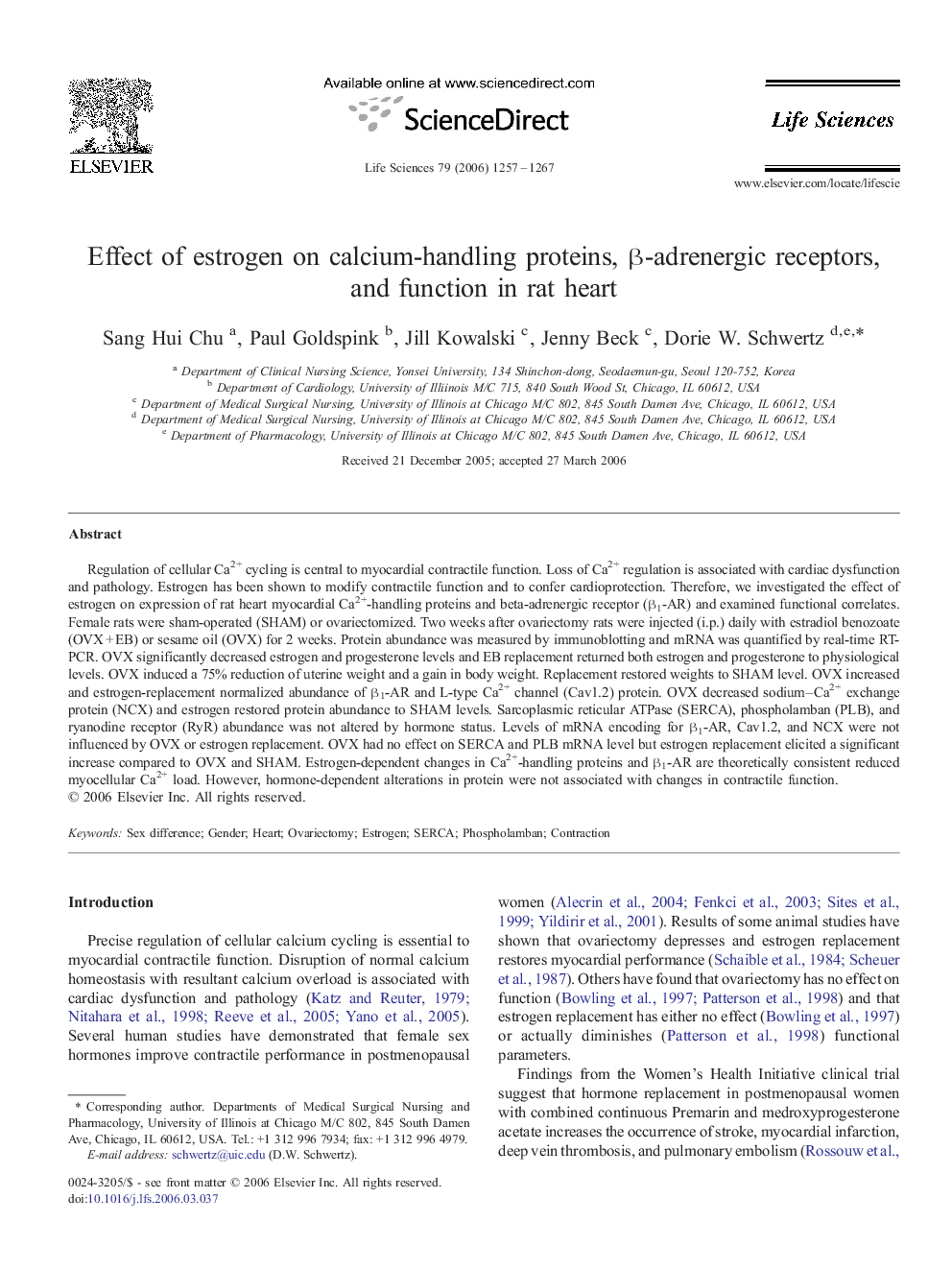| کد مقاله | کد نشریه | سال انتشار | مقاله انگلیسی | نسخه تمام متن |
|---|---|---|---|---|
| 2554780 | 1124989 | 2006 | 11 صفحه PDF | دانلود رایگان |

Regulation of cellular Ca2+ cycling is central to myocardial contractile function. Loss of Ca2+ regulation is associated with cardiac dysfunction and pathology. Estrogen has been shown to modify contractile function and to confer cardioprotection. Therefore, we investigated the effect of estrogen on expression of rat heart myocardial Ca2+-handling proteins and beta-adrenergic receptor (β1-AR) and examined functional correlates. Female rats were sham-operated (SHAM) or ovariectomized. Two weeks after ovariectomy rats were injected (i.p.) daily with estradiol benozoate (OVX + EB) or sesame oil (OVX) for 2 weeks. Protein abundance was measured by immunoblotting and mRNA was quantified by real-time RT-PCR. OVX significantly decreased estrogen and progesterone levels and EB replacement returned both estrogen and progesterone to physiological levels. OVX induced a 75% reduction of uterine weight and a gain in body weight. Replacement restored weights to SHAM level. OVX increased and estrogen-replacement normalized abundance of β1-AR and L-type Ca2+ channel (Cav1.2) protein. OVX decreased sodium–Ca2+ exchange protein (NCX) and estrogen restored protein abundance to SHAM levels. Sarcoplasmic reticular ATPase (SERCA), phospholamban (PLB), and ryanodine receptor (RyR) abundance was not altered by hormone status. Levels of mRNA encoding for β1-AR, Cav1.2, and NCX were not influenced by OVX or estrogen replacement. OVX had no effect on SERCA and PLB mRNA level but estrogen replacement elicited a significant increase compared to OVX and SHAM. Estrogen-dependent changes in Ca2+-handling proteins and β1-AR are theoretically consistent reduced myocellular Ca2+ load. However, hormone-dependent alterations in protein were not associated with changes in contractile function.
Journal: Life Sciences - Volume 79, Issue 13, 22 August 2006, Pages 1257–1267